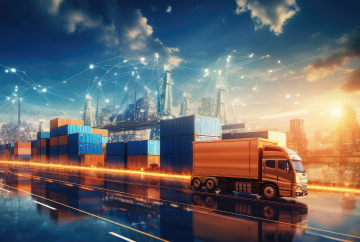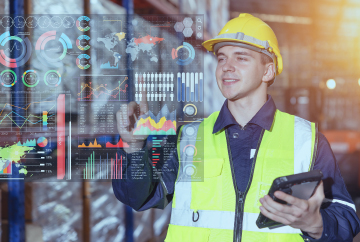The Industry 4.0 vision presented itself as a final evolution of industrial production. Digital technologies like cloud, AI, IoT, and wireless formed an essential aspect of this vision, and their adoption unleashed significant efficiencies across sectors globally.
However, when organizations attained Industry 4.0 maturity, they realized that this paradigm was fraught with unforeseeable gaps. In Industry 4.0, sustainability was an afterthought, and the human-machine relationship stood loosely defined. Moreover, new industry dynamics resulted from its adoption, and geopolitics has become unique this decade.
These factors indicate that the ultimate evolution of industrial production is yet to be realized. This, precisely, is the thinking that underpins the Industry 5.0 vision. While Industry 5.0 is a nascent framework, its relevance and upsides are being felt universally. At Birlasoft, our engagements with our clients have consistently revealed the centrality of ERP systems and processes in the Industry 5.0 vision.
In this article, learn how Industry 5.0 shapes a new vision for the digitally mature organization, and how Infor ERP can help you tap into this symbiosis between humans and machines to drive resilience, profitability, and customer outcomes.
What happened between Industry 4.0 and Industry 5.0?
The Industry 4.0 momentum ushered in a rapid adoption of digital technologies. At the core of this phenomenon was the Enterprise Resource Planning (ERP) system, which drove various processes and decisions from engineering and R&D to the shopfloor and the last mile.
ERP deployments have evolved over this period. Legacy ERP deployments continued to amass more and more customizations over time, and decade-long upgrade cycles began to hold businesses back from reaping the promised benefits of Industry 4.0 adoption.
At the same time, sustainability imperatives, cost pressures, and rising customer expectations have sent manufacturers hunting for new levers for profitability, innovation, and sustainability actions across the product life cycle. Moreover, new delivery models like assemble-to-order and project-based manufacturing find poor support in legacy ERP systems.
In conjunction with these factors, clunky digital processes in legacy ERPs degrade the employee experience. The deployment of IoT sensors and robotics has brought an array of technologies into manufacturing organizations, but they continue to work alongside people in a discordant fashion. Moreover, adverse geopolitical factors and cost pressures have exposed new weak links in the enterprise, leaving old tactics for building resilience questionable at best.



